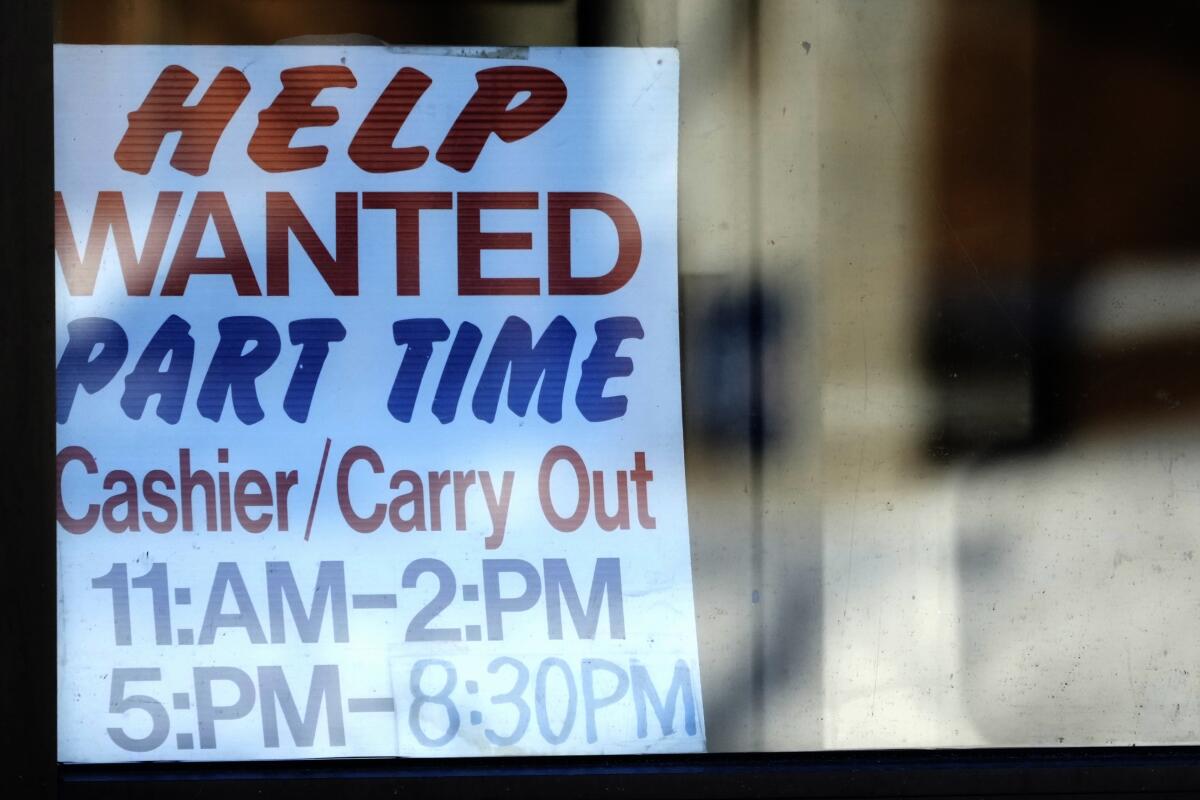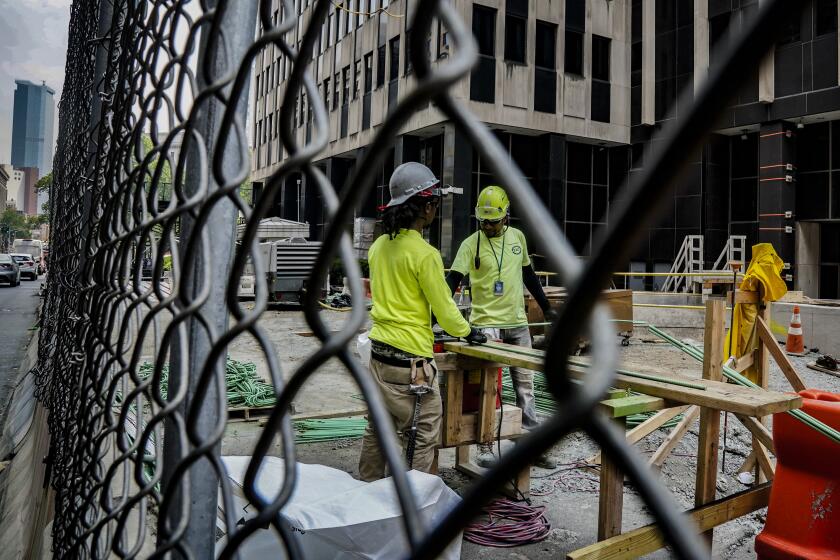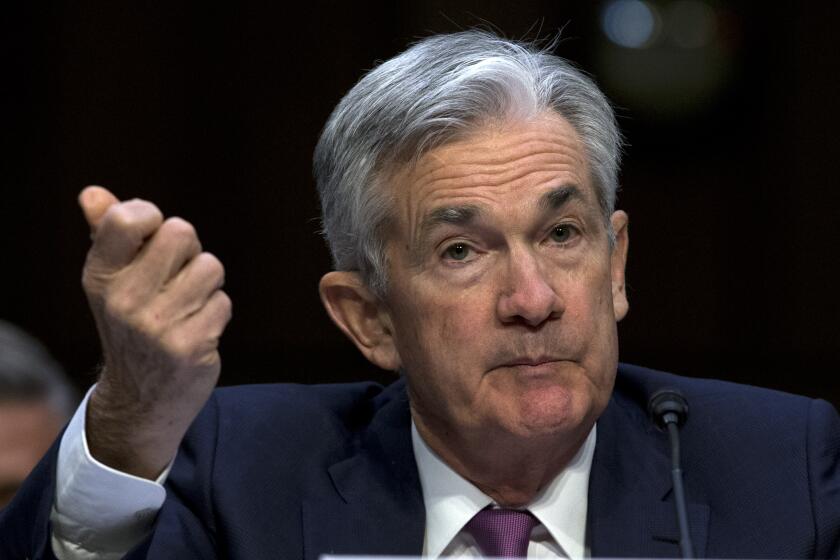The U.S. labor market is starting to show cracks. Here are the signs

- Share via
A look beneath solid headline jobs numbers shows some cracks are starting to form in the U.S. labor market. Here are the signs:
Growth slowdown
Employers added 209,000 payroll jobs in June — the smallest monthly increase since the end of 2020 — and downward revisions to the prior two months showed hiring slowing more than previously thought. In August, the Bureau of Labor Statistics will publish preliminary annual revisions to payroll numbers, which could show further softening for the first few months of the year.
What’s more, that hiring is increasingly becoming concentrated in a handful of sectors. A payroll diffusion index showing how spread out hiring is across industries has largely reverted to pre-pandemic levels after peaking in February 2022.
“It seems clear that the labor market is cooling, and if we are correct about the pending benchmark revisions, the extent to which the labor market has cooled will take many by surprise,” said Richard Moody, chief economist at Regions Financial Corp.
America’s employers pulled back on hiring but still delivered another month of solid gains in June, adding 209,000 jobs, a sign that the economy’s resilience is confounding the Federal Reserve’s drive to slow growth and inflation.
Underemployment
The underemployment rate, a broader measure of labor market slack than the headline unemployment rate, is at its highest level in almost a year as more Americans report working part-time for economic reasons. That number rose in June by the most since the immediate onset of the pandemic.
While some employers continue to struggle to attract and retain workers — which has helped keep wage growth elevated — higher interest rates and a gloomy outlook may be starting to weigh on labor demand.
“There’s more caution around hiring in general right now, and I think the part-time for economic reasons is a good indication that that’s potentially seeping into the kind of hiring we’re seeing,” said Omair Sharif, president and founder of Inflation Insights.
Temporary work
The number of temporary and contract workers on payrolls fell in June to the lowest level in almost two years. This is usually seen as a leading indicator of cooling in the labor market, as temporary staff are often the first to be added when demand is picking up and the easiest to cut when growth is slackening.
Black unemployment
The report also showed an increasing demographic divergence in employment outcomes. The jobless rate for Black Americans jumped to 6% in June, the highest level in almost a year, and these workers accounted for almost 90% of the increase in the number of unemployed Americans in the last two months.
Even Federal Reserve economists know that wages had no effect on inflation. But that doesn’t stop Fed Chair Jerome H. Powell from harping on labor costs and ignoring the real culprits.
Black workers are “often the first to lose jobs when demand for workers eases,” said Julia Pollak, chief economist at ZipRecruiter Inc. They tend to be overrepresented in low-wage sectors that get hit first when consumer spending falters.
“The June jobs report was poised to be another blowout. Instead, it showed signs of the labor market cooling,” Pollak said.
More to Read
Inside the business of entertainment
The Wide Shot brings you news, analysis and insights on everything from streaming wars to production — and what it all means for the future.
You may occasionally receive promotional content from the Los Angeles Times.












